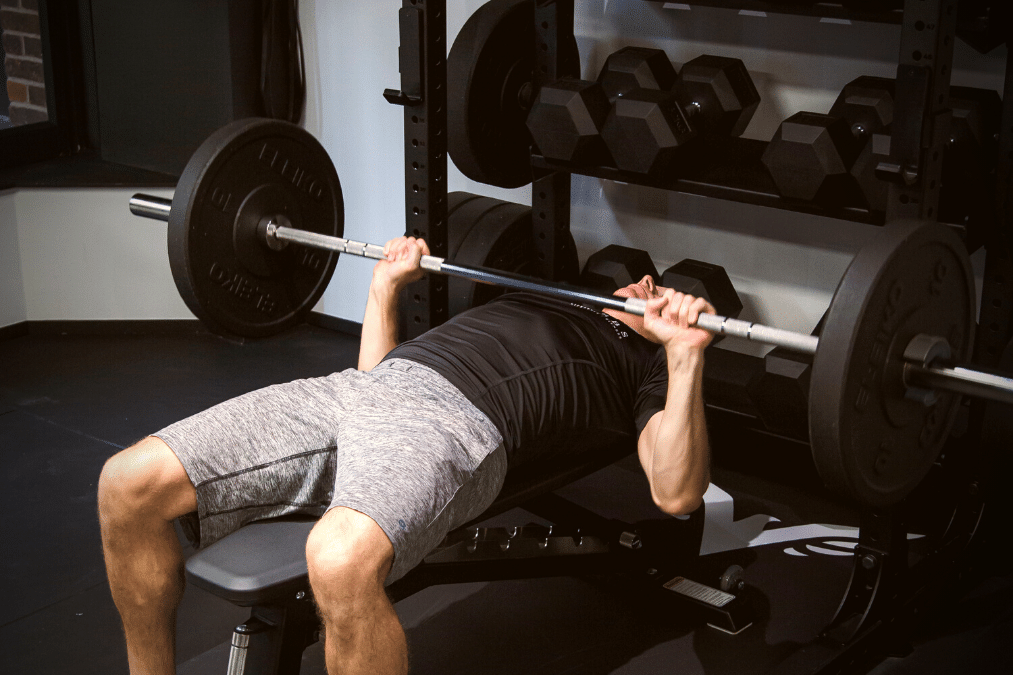Article: Training to Failure. Is it Necessary?
In order to promote muscle and strength gain, it is important to train at a high intensity so that we can fully recruit all of the fibres of the muscle we are training. Some have argued that to ensure this high level of effort is reached in each set, repetitions should be taken to the point of failure whereby no further repetitions can be completed due to fatigue. However, training to failure comes at a cost of significantly more fatigue which can negatively impact performance both within a workout and for future training sessions. So, do the benefits of training to failure outweigh the drawbacks?
Training at light loads
When performing high repetition sets (20+ reps) with light loads (~30% of 1-rep max), training with a high level of effort seems to be the most important factor for muscle growth. Therefore, taking these high rep sets to failure may be optimal (Lasevicius et al., 2022).
Training at high loads
Current evidence indicates that when training at high loads (>70% of 1-rep max), there are no differences in muscle and strength gain between training taken to failure and non-failure training (Grgic et al., 2022). However, continuously training to failure leads to significantly more fatigue and may increase the risk of injury and overtraining when compared to non-failure training, thus indicating that at higher intensities, training to failure should be avoided. Instead, leaving 1-2 repetitions in reserve (RIR) at the end of each set will allow for sufficient recruitment of the working muscles whilst at the same time minimising fatigue (Moran-Navarro et al., 2017).
Are there any situations where training to failure is beneficial?
One problem with stopping a set 1-2 reps short of failure is that individuals may underestimate how many reps they had left in the tank at the end of a set, and thus may not reach the high intensities required for optimal muscle growth. Therefore, taking the final set to failure may be beneficial for gauging intensity whilst minimising fatigue (Schoenfeld and Grgic, 2019). However, this strategy should be limited to lighter accessory/isolation exercises and should be avoided for heavy compound exercises (squats, deadlifts etc.) where the risk of injury is higher.
Additionally, individuals who train less frequently (1-2 times per week) can implement failure training more often since they will have more days during the week to recover from their sessions. Training to failure can also provide some benefit for more advanced trainees who are looking to add more variation to their training. For those who train at higher frequencies (3+ days per week), training to failure should generally be avoided to prevent excessive fatigue.
Here is an example of how you can implement failure and non-failure training in a simple full-body session:
| Exercise | RIR | Reps (Set 1) | Reps (Set 2) | Reps (Set 3) | Reps (Set 4) |
| Squat | 2 | 6 | 6 | 6 | 6 |
| Romanian Deadlift | 2 | 8 | 8 | 8 | 8 |
| Pull-up | 1-2 | 8-10 | 8-10 | 8-10 | – |
| Push-up | 0-2 | 10 | 10 | Failure | – |
| Seated Shoulder Press | 0-1 | 10 | 10 | Failure | – |
| Band Pull-apart | 0-1 | 12 | 12 | Failure | – |
References:
Grgic, J., Schoenfeld, B.J., Orazem, J. and Sabol, F., 2022. Effects of resistance training performed to repetition failure or non-failure on muscular strength and hypertrophy: a systematic review and meta-analysis. Journal of Sport and Health Science, 11(2), pp.202-211.
Lasevicius, T., Schoenfeld, B.J., Silva-Batista, C., Barros, T.D.S., Aihara, A.Y., Brendon, H., Longo, A.R., Tricoli, V., Peres, B.D.A. and Teixeira, E.L., 2022. Muscle failure promotes greater muscle hypertrophy in low-load but not in high-load resistance training. Journal of strength and conditioning research, 36(2), pp.346-351.
Morán-Navarro, R., Pérez, C.E., Mora-Rodríguez, R., de la Cruz-Sánchez, E., González-Badillo, J.J., Sánchez-Medina, L. and Pallarés, J.G., 2017. Time course of recovery following resistance training leading or not to failure. European journal of applied physiology, 117, pp.2387-2399.
Schoenfeld, B.J. and Grgic, J., 2019. Does training to failure maximize muscle hypertrophy?. Strength & Conditioning Journal, 41(5), pp.108-113.





